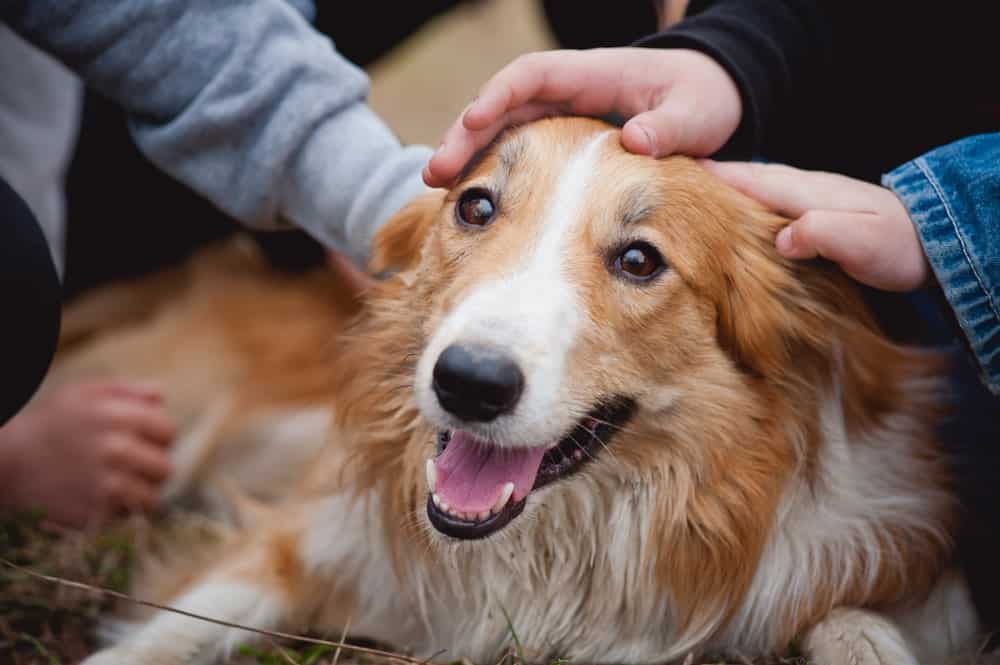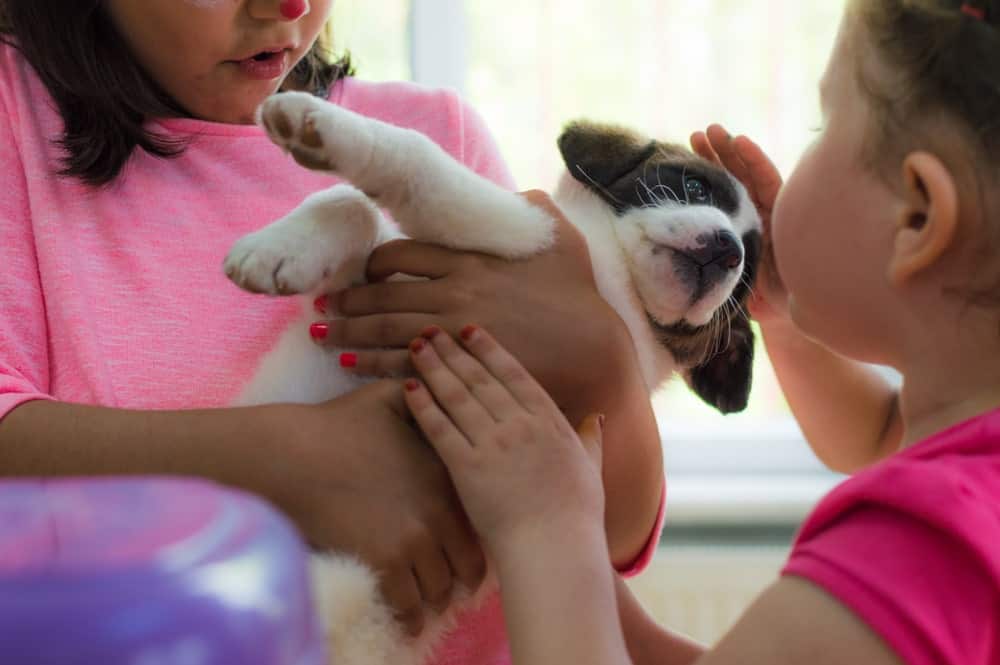“This post contains affiliate links, and I will be compensated if you make a purchase after clicking on my links.”
by Jori Hamilton
Being a kid these days is different than it was in the ‘80s, ‘90s, or even early 2000s. They’re connected 24/7 to a constant stream of chatter with social media and don’t get as much exercise as they should. Furthermore, getting an education today poses challenges that you might have never considered. Educators, administrators, and school support staff must keep children safe from school shootings, bullying, and stress like never before.
Being a supportive and loving adult is critical to a child’s success. However, sometimes the best teacher’s assistant comes strolling in on four legs. They wear collars and give kisses when kids least expect them. We’re are talking about therapy dogs, and their value in classrooms from elementary school to college is undeniable. Highly skilled, lovable, and adorable therapy dogs can perform miracles in as little as one visit with children and young adults.

History of Animal-Assisted Therapy
Believe it or not, the use of animal-assisted therapy dates back to the Ancient Greeks, where horses visited the ill to lift their spirits. In the 1960s, Dr. Boris Levinson conducted the first formal research on the effects of animal therapy after discovering that his dog helped some of his patients with mental impairments. He observed that dogs provided comfort and improved his patients’ ability to communicate with other people. By 1989, the Delta Society created a certification program for the Alliance of Therapy Dogs. Completion of the program gave dogs the designation of a therapy dog and the job of helping others for a lifetime.
Benefits of Dogs in the Classroom
We get it — not everyone loves dogs as much as we do. However, we’re firm believers that anyone that takes the time to review the data will understand the benefits of therapy dogs in classrooms. A few of the positive effects include:
• Stimulation of memory and problem-solving skills
• Lowered blood pressure and pain levels
• Elevated mood, decreased anxiety, and an increase in laughter
• Friendship and companionship
• Improved self-esteem and interaction with others
Allowing dogs to visit isn’t just about fun and games. These skilled and trained dogs must be well-tempered and socialized. Here are a couple of the skills and tasks dogs can provide in classrooms:
Helping With Autism
The Centers for Disease Control and Prevention report that one in every 59 children in America have autism. This is up from one in every 68 children from just two years before. This means that for every one to two classrooms of elementary students, one child might be struggling to interact socially with their peers in ways most people can’t understand. Even though dogs can’t talk or reason with these children, they can offer unconditional love and acceptance.
Therapy dogs can help children with autism by providing comfort assisting them in engaging with other kids. You might notice a dog lean on or lie on a child with autism and soothe their anxieties. A common symptom of autism is an increase in disruptive behaviors. When dogs work with children with autism, behaviors are often decreased, allowing the child to develop other skills.

Easing Stress Following Tragedy
School shootings are an unfortunate reality for students. Since 1970, there have been 1,300 school shootings and over 80 in 2018 alone. States that top the list of school shootings include Texas, California, and Florida. Whether these incidents occur inside or outside of the school building, they change the student’s feelings of safety associated with their school and educational experiences forever.
Facilities like Marjory Stoneman Douglas High School in Parkland, Florida understood the supportive and therapeutic importance of therapy dogs when they re-opened their doors after 17 students were killed during a mass shooting. In a Mashable article, one student reported that the dogs were “a major source of healing.” The principle, Ty Thompson, saw the massive benefit these furry therapists provided to his hurting student body and invited even more dogs for a second visit. The love and understanding offered by dogs can heal deep emotional and psychological wounds.
Working With the Nurse or Behavior Analyst
School nurses are an integral part of any successful school system. They assist with the management of chronic illnesses, perform behavioral health assessments, and help to keep students in school and healthy. But, what if each nurse were equipped with a canine companion to offer a calming presence?
This is precisely what Rebecca McWalters and her labrador, Frosty do each day at DeSana Middle School. Teachers send students to the nurse’s clinic to get Frosty and take him back to the classroom to interact with kids. Students can also visit Frosty when they’re having a bad time, which helps them stay engaged through the school day. Therapy dogs can provide a little bit of extra support that many students might not feel from peers or teachers.
Other professionals might also use the calming presence of a dog. Behavior analysts work in schools and colleges, helping students adjust to their environment and learning barriers. Dogs can ease the anxiety that some students might feel when trying to overcome these obstacles. A therapy dog can calm students and help them engage during learning activities.
Embracing the Role of Dogs in Classrooms
Therapy dogs for children go to work every day just like you and me. They work to calm fears and anxieties. They increase the child’s ability to learn and cope. These dogs might not be on the school payroll, but the love and companionship they provide are priceless.
Jori Hamilton is a writer from the pacific northwest. You can follow her on twitter @Jori Hamilton and see more of her work at writerjorihamilton.contently.com.



















Francis Fischer
Sep 8, 2021 at 11:31 am
I’m a retired college announcing teacher. I had a student who was so speech anxious she would throw up before she had to announce the news. She had once mentioned how much she loved animals so I brought my large farm dog to class. He sat beside her behind the desk and she was fine so long as her hand rested on his head. I’ve often wondered how her station manager felt about whatever dog followed my farm dog onto her set.